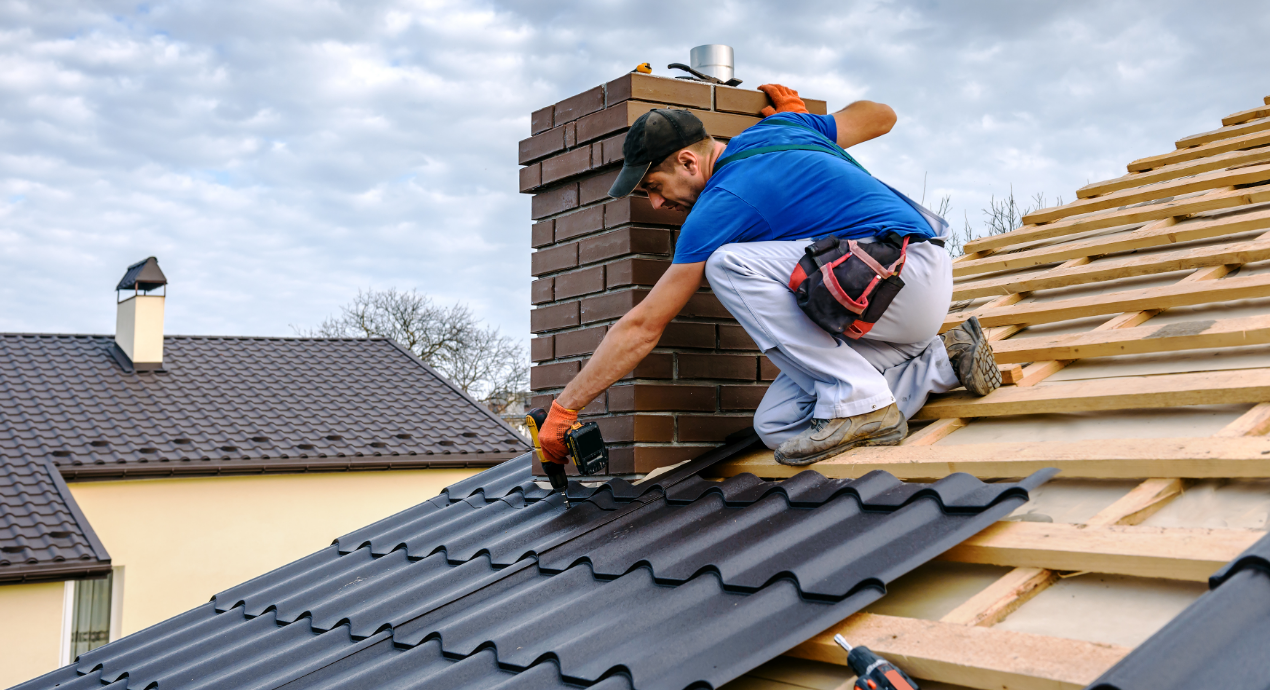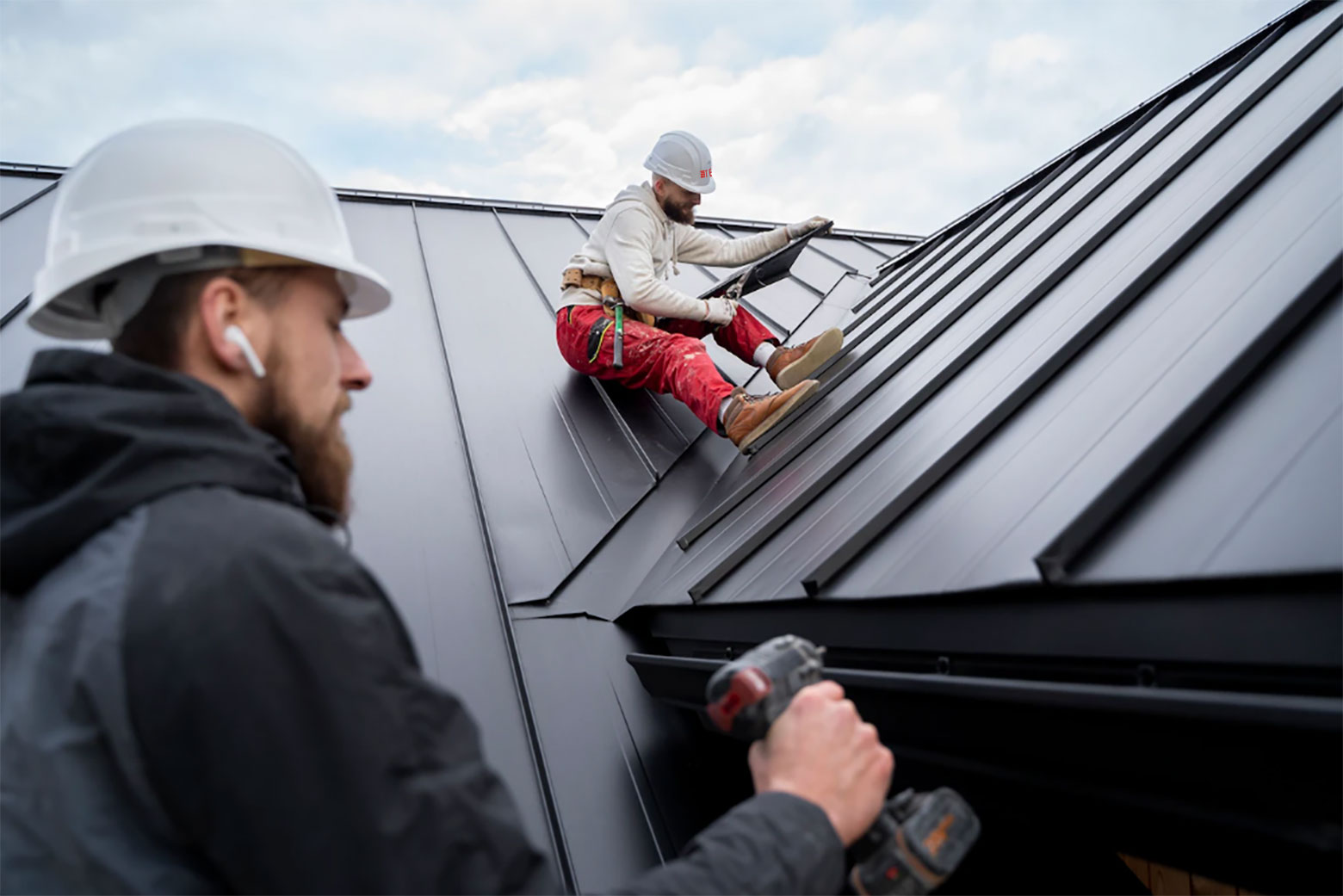Roofing Oahu: Top Quality Providers for Sturdy Roofs in Oahu
Roofing Oahu: Top Quality Providers for Sturdy Roofs in Oahu
Blog Article
Recognizing the Different Sorts Of Roofing Systems: A Comprehensive Overview for Homeowners
In the realm of homeownership, selecting the suitable roof covering design is a decision that lugs substantial implications for both performance and aesthetic allure. With a range of options-- ranging from the typical gable to the modern level-- each type offers distinct benefits and difficulties that must align with the property owner's particular needs and environmental considerations. Recognizing these differences not only help in making an educated choice yet additionally influences long-term upkeep and power performance. As we discover the complexities of various roof kinds, it becomes noticeable that one dimension does not fit all; the ideal selection may surprise you.
Gable Roofing Systems
Saddleback roofs, defined by their triangular form, are amongst the most popular roof covering designs as a result of their simplicity and efficiency in losing water and snow. This design features 2 sloping sides that satisfy at a ridge, enabling efficient drain and decreasing the threat of water buildup. The steep pitch generally connected with gable roofings enhances their capacity to deal with hefty precipitation, making them ideal for various environments.
Along with their practical benefits, gable roofings use visual adaptability. They can be adjusted to various architectural designs, from traditional to modern homes. The design can likewise accommodate extra features such as dormer windows, which boost all-natural light and ventilation in the attic room area.
Additionally, gable roofing systems provide adequate room for insulation, adding to energy performance. Property owners can select from a selection of roof covering materials, including asphalt tiles, steel, and ceramic tiles, better enhancing modification alternatives.
Despite their benefits, gable roof coverings might need added support in areas susceptible to high winds or hefty snowfall. Generally, the saddleback roof continues to be a preferred option as a result of its blend of functionality, durability, and visual charm.
Flat Roofs
Flat roof coverings are commonly identified for their minimal style and sensible applications, specifically in commercial and industrial setups (oahu roofing). These roof coverings feature a nearly horizontal or straight surface area, which enables simple building and functional room application. While they may do not have the aesthetic charm of angled roofs, flat roofs provide many benefits, especially in metropolitan settings where maximizing space is essential
One of the primary advantages of level roofs is their availability. House owners can make use of the roofing system room for different purposes, such as rooftop gardens, terraces, or photovoltaic panel setups. In addition, level roofings are typically extra cost-effective to install and maintain contrasted to their sloped counterparts, as they call for less materials and labor.
Usual products utilized for flat roofings consist of built-up roof (BUR), changed asphalt, and single-ply membrane layers, each offering distinct benefits. In general, level roof coverings serve as a practical and adaptable choice for numerous house owners and organizations alike.
Hip Roofings
Hip roofs are identified by their sloped sides that converge at the top, developing a ridge. This layout is unique from saddleback roofs, as all four sides of a hip roof incline downwards toward the walls, giving an extra stable structure. The angle of the slopes can vary, enabling for convenience in building aesthetic appeals and functionality.
Among the primary advantages of hip roof coverings is their capability to stand up to hefty winds and unfavorable climate condition. The sloped surface areas allow better water drain, decreasing the risk of leaks and water damages. Additionally, hip roofings provide enhanced attic room room, which can be used for storage or even exchanged habitable areas.
However, constructing a hip roofing system can be extra expensive and complex than less complex roofing types, such as gable roofings. The extra product and labor entailed in developing the inclines and guaranteeing correct structural honesty can cause higher costs. In spite of these drawbacks, several house owners favor hip roof coverings for their toughness, aesthetic appeal, and capacity for power effectiveness.
Mansard Roofing Systems
Mansard roof coverings, typically acknowledged by their special four-sided layout, attribute two inclines on each side, with the reduced slope being steeper than the upper. This building design, stemming from France in the 17th century, is not only aesthetically enticing however useful, as it makes best use of the useful area in the top floors of a structure. The high reduced slope permits more headroom, making it an excellent choice for attics or loft spaces, which can be transformed right important link into living rooms.
Mansard roofings are defined by their convenience, accommodating different building designs, from conventional to modern-day. They can be created with different materials, consisting of asphalt roof shingles, slate, or metal, providing house owners with a variety of alternatives to suit their budgets and preferences. Furthermore, the design permits for the assimilation of dormer home windows, boosting natural light and ventilation in the upper degrees.
Nonetheless, it is necessary to consider the prospective disadvantages. Mansard roof coverings might need even more upkeep because of the complexity of their layout, and their high slopes can be testing for snow and rain drainage. Generally, mansard roofing systems combine sophistication with practicality, making them a preferred selection amongst property owners looking for unique architectural attributes.
Dropped Roofing Systems
As home owners significantly seek simpleness and performance in their architectural styles, shed roof coverings have become a popular choice. Identified by a single sloping plane, a shed roof covering provides a minimalist visual that matches numerous home styles, from modern to rustic.
One of the main benefits of a shed roofing system is its uncomplicated building and construction, which commonly translates to reduce labor and product costs. This design permits efficient water drainage, lowering the risk of leaks and water damage. Furthermore, the upright slope offers enough area for skylights, enhancing natural light within the interior.
Lost roofs likewise offer flexibility in regards to use. They can be efficiently integrated into enhancements, garages, or exterior structures like sheds and pavilions. Moreover, this roof style can fit numerous roof covering products, including steel, asphalt shingles, or even green roofings, lining up with eco-friendly campaigns.
However, it is important to take into consideration local environment conditions, as heavy snow loads might demand changes to the roof's angle or framework. On the whole, lost roof coverings offer a sensible and cosmetically pleasing option for house owners seeking to make best use of capability without endangering style.
Conclusion


Gable roofing systems, identified by their triangular shape, are amongst the most preferred roofing styles due to their simpleness and effectiveness in dropping water and snow. oahu roofing. The high pitch commonly associated with gable roofings boosts their ability to manage hefty rainfall, making them suitable for different environments
While they might do not have the aesthetic charm of pitched roofs, level roofings offer many benefits, specifically in city environments where optimizing room is essential.

Report this page